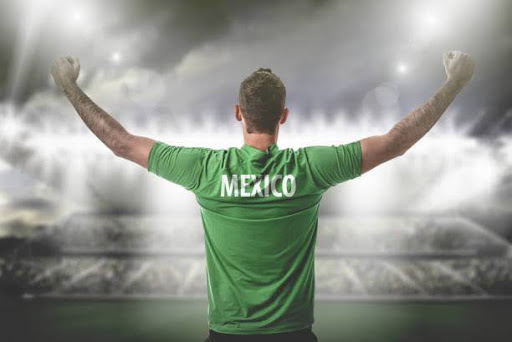Sports
BMW Championship: Premier Golf Tournament

The BMW Championship is one of the most prestigious golf tournaments on the PGA Tour, attracting top players worldwide. Known for its challenging courses, high stakes, and rich history, the tournament has become a staple in professional golf. This article delves into the BMW Championship’s origins, significance in the golfing world, notable moments, and what makes it a must-watch event every year.
History of the BMW Championship
Origins and Evolution
The BMW Championship has its roots in the Western Open, which was first held in 1899. The Western Open was one of the oldest and most revered tournaments in professional golf, and in 2007, it was rebranded as the BMW Championship. This transition marked a new era for the tournament, aligning it with the prestigious FedExCup Playoffs and elevating its status on the PGA Tour.
Role in the FedExCup Playoffs
The BMW Championship is the penultimate event in the FedExCup Playoffs, making it crucial for players aiming to secure their spot in the season-ending Tour Championship. Only the top 70 players in the FedExCup standings qualify for the BMW Championship, which adds to its intensity and competitive nature. The tournament offers a significant purse and crucial FedExCup points that can make or break a player’s season.
Venues and Course Challenges of BMW Championship
Rotating Courses
Unlike other PGA Tour events, the BMW Championship has no fixed venue. Instead, it rotates among some of the most iconic golf courses in the United States, including Medinah Country Club, Crooked Stick Golf Club, and Aronimink Golf Club. Each course presents unique challenges, from tight fairways and tricky greens to varying weather conditions, ensuring players bring their best game to succeed.
Course Highlights
One of the BMW Championship’s defining features is the challenging nature of the courses selected for the tournament. For example, Medinah Country Club is known for its long, narrow fairways and fast greens, making accuracy and strategy key to success. Crooked Stick Golf Club, on the other hand, offers a more open layout but with hazards that can penalize even the slightest mistake. The variety in course selection keeps the tournament fresh and exciting, providing a true test of the player’s skills.
Notable Moments and Champions
Memorable Wins
Over the years, the BMW Championship has seen some of the most memorable performances in golf. Players like Tiger Woods, Rory McIlroy, and Dustin Johnson left their mark on the tournament with stunning victories. Tiger Woods’ win in 2009, where he set a course record at Cog Hill, remains one of the most iconic moments in the tournament’s history. Rory McIlroy’s triumph in 2012 at Crooked Stick, where he dominated the field, is another highlight that golf fans continue to discuss.
Record-Breaking Performances
The BMW Championship has also been the stage for several record-breaking performances. In 2020, Dustin Johnson shot a stunning 30-under-par to win at Olympia Fields, setting a new tournament record. Such performances showcase the players’ talent and the level of competition at the BMW Championship, making it one of the most anticipated events on the PGA Tour calendar.
Impact on Golf and the Community
Influence on Professional Golf
The BMW Championship significantly impacts the professional golf landscape, not only because of its place in the FedExCup Playoffs but also because of its ability to attract the best players in the world. The tournament’s competitive field and challenging courses help elevate professional golf standards, pushing players to improve their game. Additionally, the BMW Championship’s status as a high-profile event helps to grow the sport’s popularity, drawing in new fans and inspiring future generations of golfers.
Charitable Contributions
Beyond its impact on professional golf, the BMW Championship is known for its philanthropy commitment. The event supports the Evans Scholars Foundation, which provides college scholarships to caddies. Over the years, the tournament has raised millions of dollars for this cause, making a tangible difference in the lives of deserving young students. This charitable aspect of the BMW Championship adds a layer of meaning to the event, reminding players and fans alike of the positive influence golf can have on communities.
What to Expect in Future Tournaments
Upcoming Venues
Looking ahead, the BMW Championship will continue to rotate among some of the best golf courses in the United States. Future venues are expected to challenge players with unique layouts and course conditions, keeping the competition intense and unpredictable outcomes. Fans can look forward to seeing their favorite players navigate these courses, with each tournament offering its own set of challenges and memorable moments.
Rising Stars and Veterans
As the BMW Championship evolves, so too does the field of players. While veterans like Tiger Woods and Rory McIlroy have left their mark on the tournament, a new generation of golfers is beginning to make their presence felt. Players like Collin Morikawa, Viktor Hovland, and Scottie Scheffler represent the future of golf and are poised to create their legacies at the BMW Championship. Fans can expect to see these rising stars go head-to-head with seasoned pros, making for exciting and unpredictable tournaments in the years to come.
Conclusion
The BMW Championship is more than just a golf tournament; it celebrates the sport’s rich history, top talents, and future. With its challenging courses, memorable moments, and significant impact on professional golf and the community, the BMW Championship has earned its place as one of the most prestigious events on the PGA Tour. Fans can look forward to many more years of thrilling competition and inspiring performances as it grows and evolves.
More About Sports
Sports
The Evolution of Mexico Soccer: From Historic Triumphs to Modern Challenges

Football is the most popular sport in Mexico, soccer or otherwise internationally known as football and has had a long history that portrays the mexicos. The history of mexico soccer: the golden time and evolution of a team which became one of the strongest soccer teams of the continent. Going further deeper into analysis of the development of mexico soccer this article seeks to analyze or review the sides or aspects of mexico soccer in relation to history, today and tomorrow.
Historical Overview
The football reached Mexico towards the end of the nineteenth century when it became popular with immigrant influence with the locals. The first professional league was started much earlier in the form of the mexico Football League (LIGA MX) or Liga mexicana de Football that was formed in the year 1922. Organized on a regional level, the league was weak towards its financial side and did not have much development in infrastructure from the start, but it was becoming stronger and stronger each year.
The national team’s first important step was made during the 1970 when Mexico hosted the FIFA World Cup. The tournament became a great event in the history of the country, proving that Mexico can host international sports news of the highest level. Although failing to progress past the quarter final stage they held their own, which was seen as a testimony to Mexico’s budding soccer civilization.
Four years later, Mexico again got an opportunity of hosting the football event for the second time in 1986. This cup is full of dramatic sensations and decisive games and among them Argentina Diego Maradona’s ‘Hand of God’ and the ‘Goal of the Century’. The mexico team again showed its soccer mastery in the competition reaching up to the quarter final stage but not able to repeat its past performance and qualify for the semifinals.
Golden Generation s and Domestic Success
Mexican soccer was at its peak during the 1990s and early this century. Soccer clubs such as Club América, Chivas Guadalajara and Pumas UNAM dominated the domestic leagues while ‘mexico Talent’ started to come through to Europe leagues strong. A highly intense playmaker, Hugo Sánchez came to be among the most recognized players in world soccer and had a distinguished period in Spain’s La Liga with Real Madrid.
At the same time, the mexico national team also entered the world level of team footballing competitions. In the FIFA Confederations Cup held in Mexico in 1999 the national team emerged as the élite champions beating Brazil in the finals. This win established that Mexico was capable of imposing a fight against some of the giant teams globally.
The early 2000 domestic leagues also saw the Liga MX, the men’s football mexico domestic league, as one of the strongest leagues in the Americans. Some of the impacts developed from it include; As a result of competitively the league boosted and came with the discovery of new talented players from different countries hence; this improved soccer in the region.
Challenges and Setbacks
Relatively, Mexican soccer has been iconic; however, it has also experienced several issues. In world cup tournaments the national team has rarely been able to move to the next stage past the quarter final stage. This has been becoming a cycle which has caused people to criticize as well as demand a change for the organisms that oversee sports.
Like elsewhere on the globe, Mexico soccer has not been immune to acts of corruption and poor management across club and national teams. The actions like financial frauds, match-fixing and governance-related problems have from time to time disturbed the achievements of this sport. Measures have been taken to solve these challenges, which made reforms and enhanced transparency; nevertheless, the way to full confidence recovery prevails.
This is another major concern mainly related to development of soccer infrastructure that the country has been facing. In some regions the facilities are very modern while in others they still have problems associated with insufficient training arenas and equipment. This distorts the general quality and the growth of the young talents that could be produced especially in the demanding disciplines.
The Modern Era
Mexico soccer has since then continued developing especially in the production of young talents and improving the caliber of its local leagues in recent years. The mexico national soccer team commonly called “El Tri” has changed hands with the new crop of players breathing life into the games. Aleksandar Tufegdžić, Ollen, and Kosan Structural Engineering Engineering Merge: Moving Beyond ‘Conventional Wisdom’ 303 The synergy discovered with regards to players such as Hirving Lozano, Raúl Jiménez and Edson Álvarez when they joined European leagues coffee has to do with the stars that constitute the future of the mexico soccer team.
Liga MX currently maintains its competitiveness level and continues to be viewed as the premier league where several talented internationals are signed while also working as the launching pad for young players. Owing to increased membership, modernization and development of stadiums, adventurous Technologies in football broadcast particularly in league games increased the domestic and international popularity of the league.
The mexico Soccer Federation (FMF) has also put measures that seek to develop soccer in the country at the grassroots level. Efforts towards recruiting and growing talent, training and development of coaches and enhancing provision for player development so as to feed the professional leagues has been initiated.
Mexico Soccer: Choice and Challenge 2000–2010
Therefore, Mexico soccer has future directions that include the prospects and the issues of the game. The further development of soccer among novices and the successful nurturing of youth prospects will be a vital factor to decide the team’s future successes in further international
tournaments. These include the continuously changing infrastructure and improvement of governance, which will also be the factors that will define its future.
The prospect of the 2026 FIFA World Cup that will be hosted by Mexico alongside the United States and Canada can be seen as a beneficial opportunity for mexico soccer. This tournament will also serve not only as the opportunity to show the ability of the country to host a major global event but also as a chance for the existence of the national team to have a big influence on the world stage.
Conclusion
Mexico soccer can therefore be said to have evolved from one level to another from its humble starting point to being a force to reckon with in soccer. Some of these include Competition, Lack of sufficient capital, Government policies among others, they are all proven means that the goal of getting to the next level is achievable. In this way, different levels of mexico soccer will go as a constant process to establish new roots and aim at higher successes in the future.
Sports
Ange Postecoglou: The Man Redefining Tottenham Hotspur
Celebrity
Kobe Brown: A Rising NBA Talent
-

 News9 months ago
News9 months agoBrooke Tilli – Bio, Age, Relationships, Career, Net Worth, and Boyfriend
-

 Celebrity8 months ago
Celebrity8 months agoPedro Vaz Paulo: A Life of Redemption
-

 Celebrity8 months ago
Celebrity8 months agoBurak Deniz: The Turkish Heart-Throb
-

 Tech8 months ago
Tech8 months agoCloud Computing: Enabling IT Innovation
-

 Tech8 months ago
Tech8 months agoSaaS Integration: Cloud-Based Software
-

 News8 months ago
News8 months agoDefine a Offshore Accident Lawyer
-

 Business8 months ago
Business8 months agoJanitor AI: Future of Auto Maintenance
-

 News8 months ago
News8 months agoAI Deepfake Threaten to Global Elections. No One Can Stop Them.





